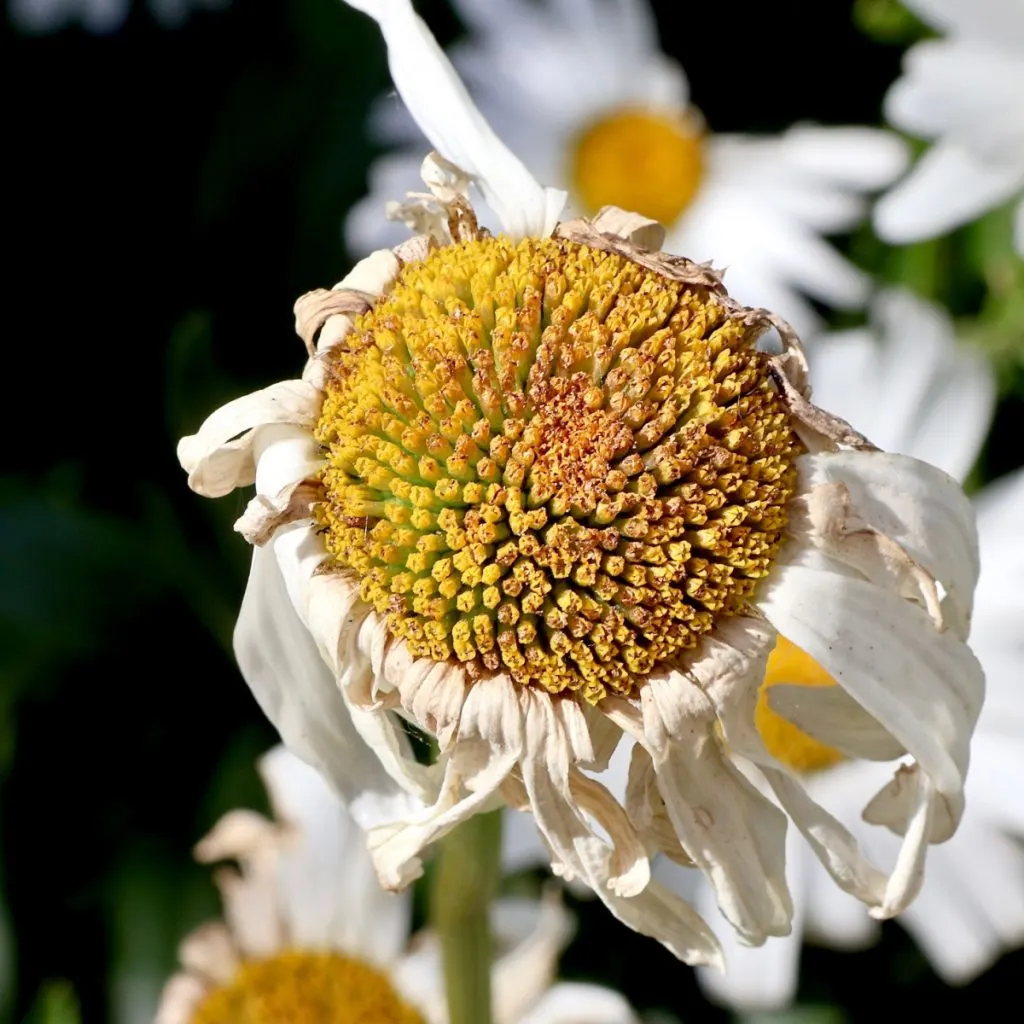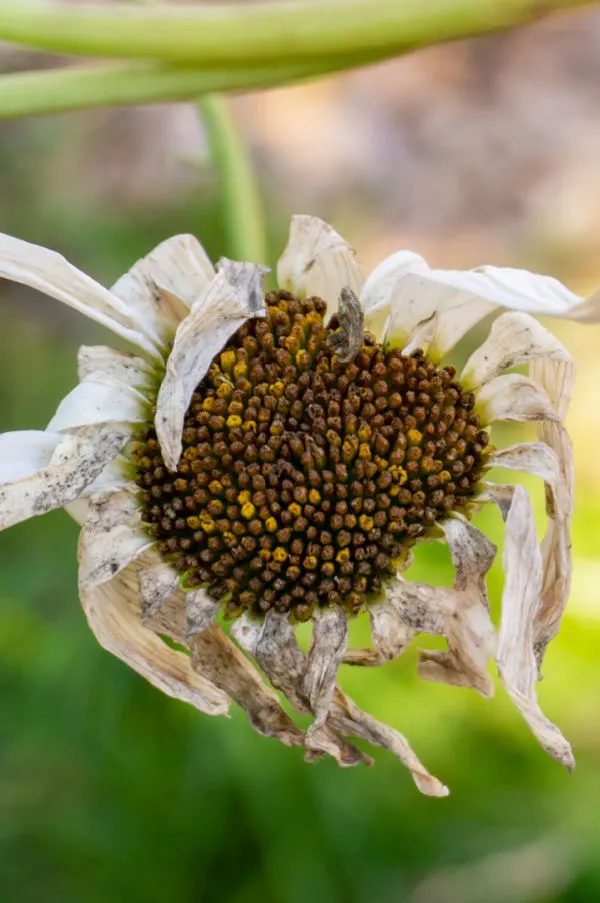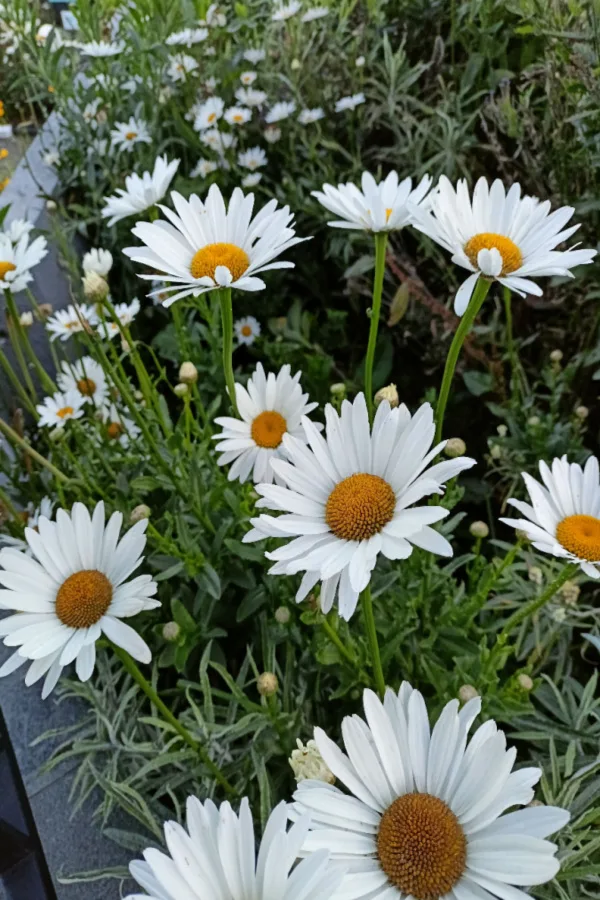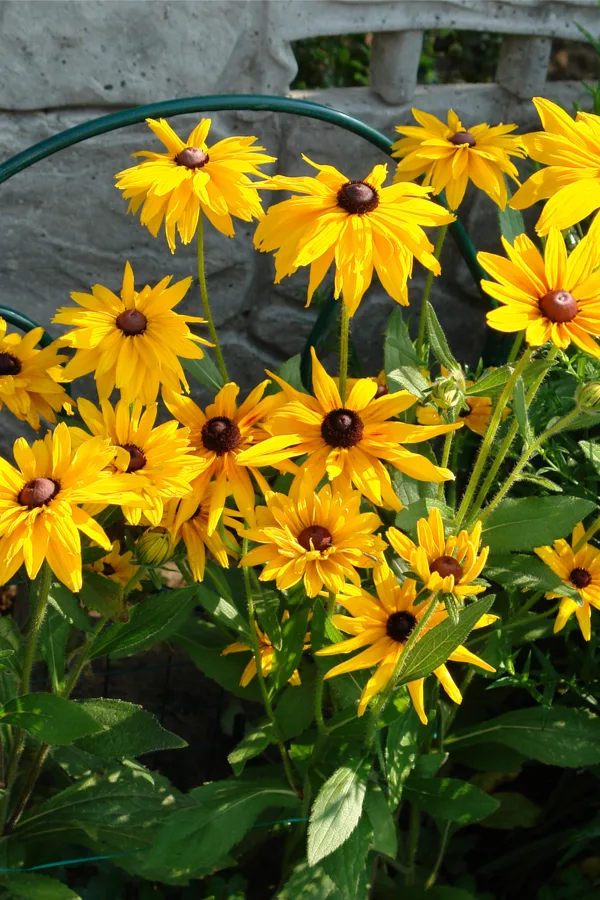Wondering what to do with your daisies after they bloom in late summer?
Daisies are certainly one of the most beautiful and popular late summer flowering perennials around. Along with black-eyed Susan and coneflower, daisies truly come to life in the late hot summer months when their blooms burst out in a mass of flowering color.
But as late summer starts to give way to early fall, the gorgeous blooms of daisies begin to fade. And when they do, it’s time for a little late season care to keep your plants healthy and strong for the following year – and keep them from self seeding and spreading beyond where you would like them to grow!

As you will see below, although you can allow daises to simply fade away in your flowerbeds, there are a lot of great reasons to remove the blooms as they begin to die off. Even more, if your plants have become a bit large and unruly, late summer is also the perfect time to divide and transplant!
What To Do With Daisies After They Bloom
Removing Spent Blooms – Why It’s Important For Daisies
Once daisy plants have completed their bloom cycle, one of the best things you can do for your plants and you is to remove their spent blooms. Although seed heads are great food for birds, allowing them to remain can create a lot of issues. Not just for your flowerbeds, but for you as the gardener as well!
Daisies are prolific self-seeders. When seed heads remain late into fall on the stems of plants, they dry out and drop from the plant. And all of those seeds can quickly become new daisy plants.
Most of the seeds drop right around the existing daisy clump. Others can blow in the wind or be carried by birds. And as they are, they are then deposited all over the landscape. One thing is for sure, it can create an overload of volunteer plants that can border on being invasive.

By simply cutting back the spent flowers as they finish blooming, you can all but eliminate volunteer plants. As for the birds, if you would still like to feed them, try putting the seed heads near a bird feeder. As long as they are away from the soil and mulch in your flowerbeds, the self seeding issue is far easier to keep under control.
Don’t Compost Seed Heads!
One thing is for certain – be sure to keep the seed heads out of your compost bin. Most home compost piles simply don’t get hot enough to kill the seeds, and you can end up with plenty of volunteer plants next year wherever you use it.
This is a good practice to follow when cutting back any of your perennials in the fall. The fewer the seeds in your compost pile, the less chance you have of volunteers coming up wherever you use your compost.
Cutting Back Blooms & Foliage – What To Do With Daisies After They Bloom
Spent blooms should be cut back as soon as they begin to fade to keep reseeding issues to a minimum. To do this, simply snip the bloom and stem down to where it pops up from the foliage. This not only makes the plant far neater, but also makes the stem and flowers easy to remove.
As daises progress deeper into the autumn season, the foliage of the plants will begin to fade as well. At this point, it’s time to cut the entire plant back near the ground for winter.

A sharp pair of hedge trimmers are perfect for this task. Simply take the shears under the plant and shear the foliage off a few inches above the soil line. If you have already removed the seed heads, the remaining foliage and stems are a great addition to your compost bin. Affiliate Product Link: Garden Hedge Shears For Perennials, Shrubs & Bushes
Now all that is left is to decide whether your plants need divided and split – or to simply mulch them and let them go till next year!
How To Divide Overgrown Daisies – What To Do With Daisies After They Bloom
Daisies grow outwardly in a clump formation. When these clumps get too large, they often begin to die from the center out. At the same time, larger root structures also make it hard for the plant to absorb proper nutrients and moisture to power the plant.
The end result is an overgrown plant that not only looks unsightly, but blooms with far less frequency and vigor. To avoid this, it’s best to dig up and divide your daisies every three to five years.
You can actually divide them right as they finish blooming or later in the fall when the foliage completely dies back. We like to divide right after they finish blooming as it gives the new transplants a bit more time to set roots before winter, getting them ready to hit the ground running come next spring.

Dividing – What To Do With Daisies After They Bloom
To divide, begin by cutting back all of the foliage and stems as if you were preparing the plant for winter. Next, dig a few inches all around the outer edges of the clump to loosen it from the soil. The plant should then pop out of the soil fairly easily as the roots of daisies are usually not extremely deep.
To divide the plant, turn it over to expose the bottom of the roots. By turning it over, it makes it easier to see the true size and structure of the roots. It also happens to make slicing the plant into even sections much easier.
Using a sharp spade or garden knife, slice the plant into three or four even sections. Keeping the divisions all about the same size will give you equal size plants the following year. This is where a Hori-Hori knife comes in handy. They truly are one of the best tools around for slicing and digging up perennials! Affiliate Product Link : Hori Hori Knife
How To Transplant – What To Do With Daisies After They Bloom
It’s best to always transplant any new plant divisions as soon as possible. The longer the clumps remain out of the soil, the quicker they can dry out and die off.
To transplant, dig the planting hole to twice the diameter and one and a half times the depth of the clump. This will allow loose soil for the roots to easily re-establish in their new space. Daisies do not require a lot of nutrients to survive, but planting each new start with a 50/50 mix of compost and soil will do wonders for helping the plants to thrive. See our article: How To Create A Great Summer Compost Pile – 3 Simple Secrets To Make Compost Fast!

Fill the bottom of your planting hole with the soil/compost mix. Set the new transplant in the hole so the top of the clump sits barely above the soil surface line. Keep the transplant slightly elevated. This will keep water from pooling around the roots, which can rot the clump out before it establishes.
To complete transplanting, water the plant in with a deep soaking. Finish by applying a two to three inch mulch over the top of the plant. This will help keep moisture in, and help protect the plant’s roots through winter.
If you transplant in late summer or early fall, your daisy may start to regrow. No worries – it will simply go dormant again as winter approaches.
Even if you are not digging up and transplanting new starts, you should still mulch your daisies in the fall for winter protection. A few inches of mulch on top of each plant will do the trick. Here is to cutting back and dividing your daisies this fall, and to having bigger and better blooms next growing season!
This Is My Garden
Follow Our Facebook Page For Great Gardening Tips And Advice! This Is My Garden Facebook Page
This Is My Garden is a garden website created by gardeners, for gardeners. Jim and Mary Competti have been writing gardening, DIY and recipe articles and books and speaking for over 15 years from their 46 acre Ohio farm. They publish three articles every week, 52 weeks a year. Sign up today to follow via email, or follow along!
